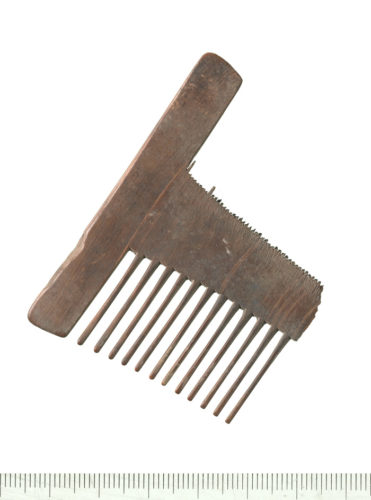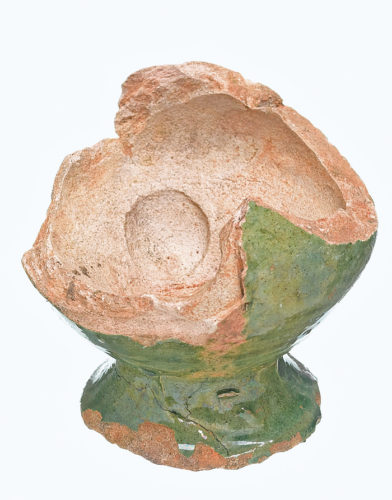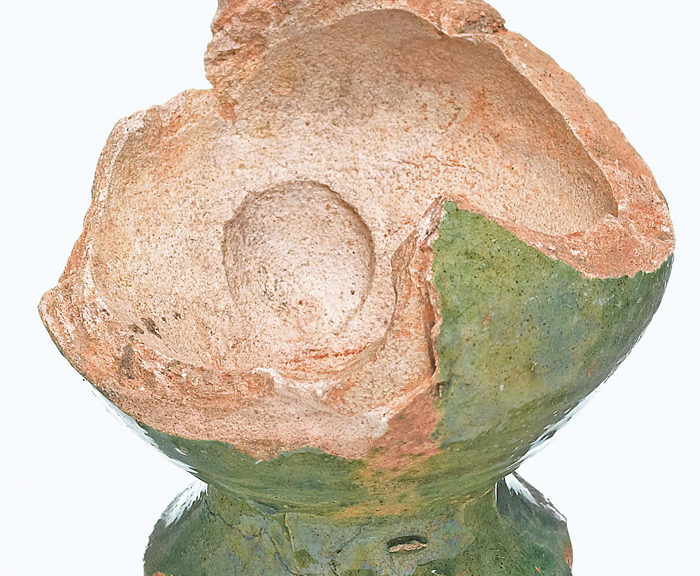If you’re a Shakespeare buff or just interested in theatrical history, you may be aware that archaeologists from the Museum of London Archaeology are currently excavating the Curtain Theatre. The Curtain is one of the earlier theatres used by Shakespeare, and its well-preserved remains are filling in a lot of gaps about our knowledge of Elizabethan theatre. It has already yielded some surprises: the stage is rectangular, not circular as previously supposed. And last week, you probably saw the news articles exclaiming that props from the original Romeo and Juliet were unearthed. Is this true? Or rather, how likely is this?

First, some background on the Curtain. It opened in 1577 and staged plays until 1622 (it may have continued being used until 1642, when all the theatres were closed, but no records exist of its use at that time). Shakespeare’s company, the Lord Chamberlain’s Men, operated there from 1597 to 1599. Romeo and Juliet and Henry V had their first performances there.[ref]”Shakespeare Curtain Theatre: Remains Reveal Toy Used for Sound Effects.” BBC News. N.p., 17 May 2016. Web. 20 May 2016. <http://www.bbc.com/news/uk-england-london-36304627>.[/ref]
So what artifacts were discovered at the site? A ceramic bird whistle, a token (possibly for purchasing beer), and a bone comb.[ref]MOLA Team. “Initial Findings from Excavation at Shakespeare’s Curtain Theatre Revealed.” Museum of London Archaeology, 17 May 2016. Web. 21 May 2016. <http://www.mola.org.uk/blog/initial-findings-excavation-shakespeare%E2%80%99s-curtain-theatre-revealed>.[/ref]

While bird whistles were popular children’s toys at the time, “the fact that this one was unearthed immediately outside the Curtain, suggests the possibility that it may have had some connection with the theatrical performances there.” The leap is then made that since Romeo and Juliet features a scene where they discuss a singing bird, perhaps this was used to make a sound effect.
It makes a great headline: “Original Romeo and Juliet props found.” But how possible is it?
First of all, did Elizabethan theatre use offstage sound effects? Yes. Offstage sounds and effects were common, and included bells, alarms, wolves, crickets, thunder and gunshots. When a birdcall was needed, “a talented imitator was usually hired, who created these sounds with or without the aid of whistles or pipes.”[ref]Kaye, Deena, and James LeBrecht. Sound and Music for the Theatre: The Art and Technique of Design. 2nd ed. Boston: Focal, 2000. 4-5. Print.[/ref] Henslowe’s diary contains an actual inventory of props owned by a theatre at the time. Though it is not Shakespeare’s theatre, it is contemporary with him. No bird whistles are mentioned, but he does have timbrels (similar to tambourines) and a “chime of bells”.
Second, did Shakespeare like birds? Heck, yes. Shakespeare’s plays contain over 600 references to birds, with many of those to bird vocalizations.[ref]Wilson, Christopher R. Shakespeare’s Musical Imagery. London: Continuum, 2011. 98.[/ref]
So it seems likely that Shakespeare would have used a bird whistle in his plays, and it is possible that Romeo and Juliet would have been one of those plays. Of course, Shakespeare was only at the Curtain for 2 years, and it operated for 65 years. The whistle could easily have belonged to another group. Further disproof of this theory is the fact that properties often belonged to the acting companies, not the theatre building itself. If it was Shakespeare’s whistle, it should have traveled to The Globe when his company moved.
Regardless of the whistle’s true ownership, the significance of this discovery should not be underestimated. The Curtain has the best preserved remains of a theatre from this era. And only a few prop-related items from Shakespeare’s time have ever been unearthed, such as a cannon ball and a prop sword from one of the “Bear Gardens”.





